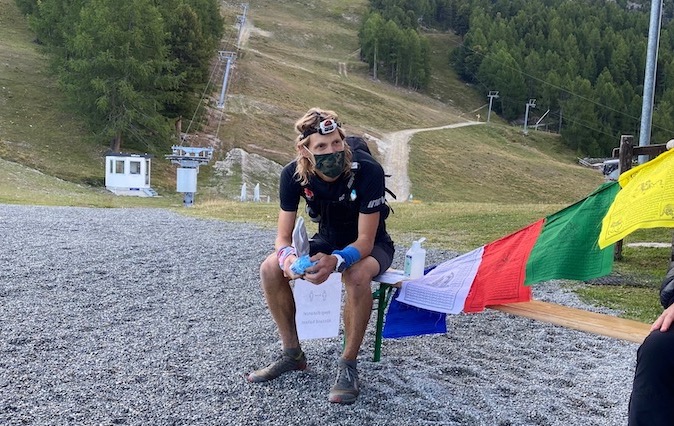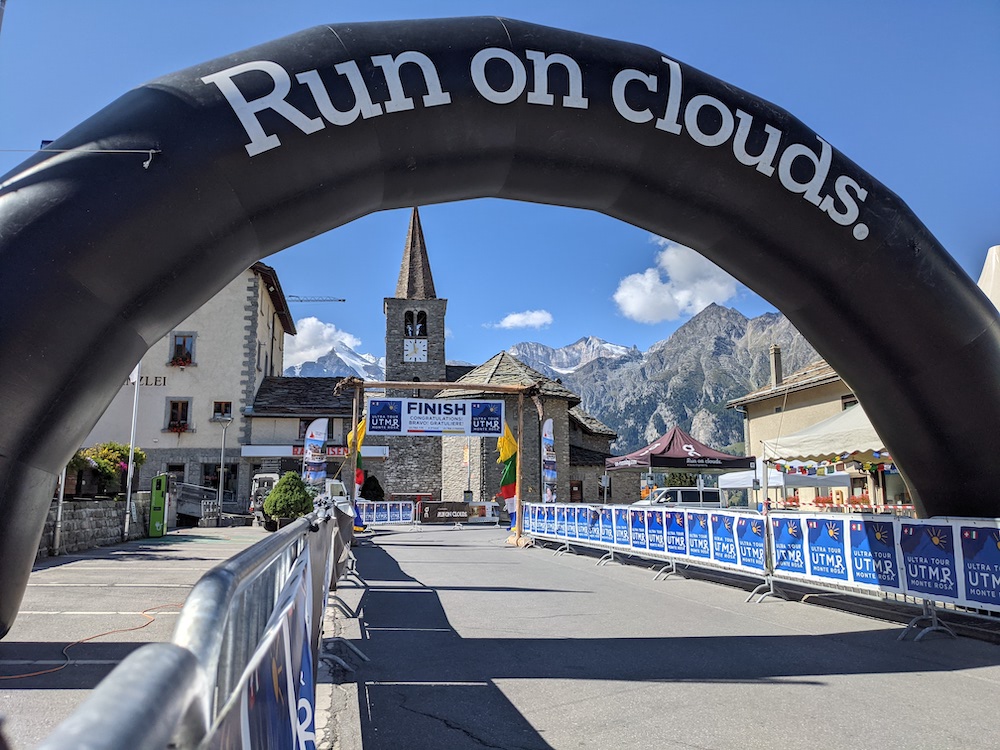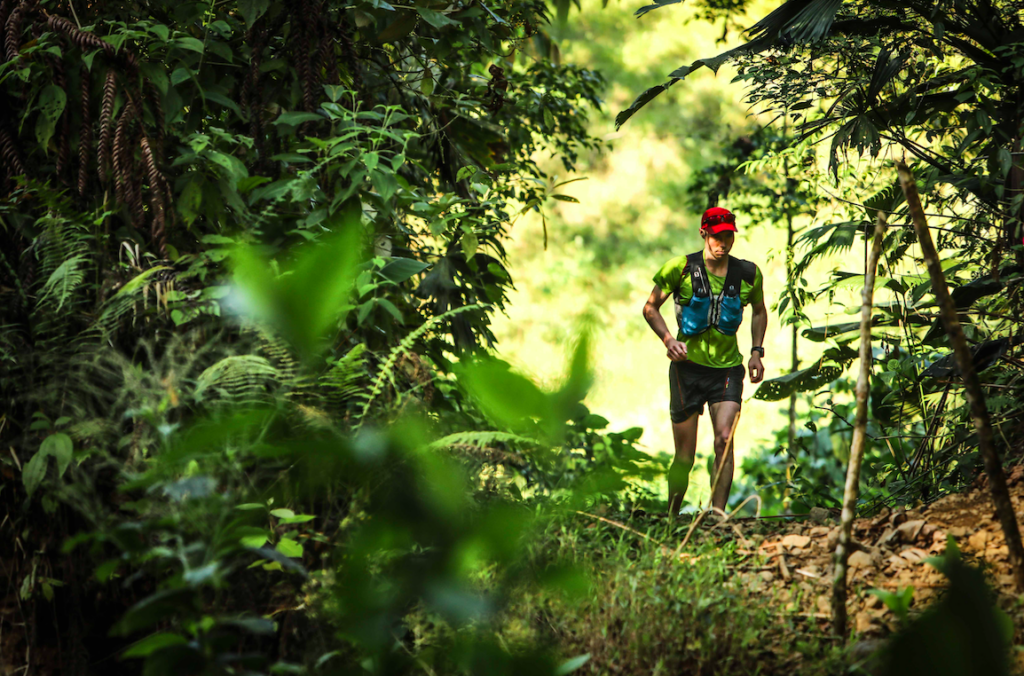The Ultra Tour Monte Rosa is a hard race. For a start it is well over its ostensible 100 miles, clocking in at about 106 miles with over 11,000m of ascent and descent. Then there is the terrain, which varies from nice flowy trails to treacherous rock fields and scrambles. The UTMB it is not. For the 2021 race we ran a ‘special edition’ missing out the Italian section due to ongoing Covid restrictions, but the alternative route provided plenty of its own treats, including an extra loop from Zermatt in the shadow of the Matterhorn.
My race went really well. I managed to work my way to the front after around 60km and build a gap that I was able to hold to the end. Of course there were plenty of ups and downs along the way and moments of self doubt during a long and lonely second night. Fellow Brit, Jasmin Paris, was first woman, also working her way through the field for a strong finish. This got me thinking: how do you race well in the Alps when you live in the UK? Here are a few of my thoughts.

Altitude
The hills in Europe are big. I love the recalibration that you need to make to your familiar horizons when arriving in an Alpine Valley. You look up, then you need to crane your head another few degrees to take it all in. Most races go high; certainly high enough to have a physiological impact. Much as I would love to spend a few weeks acclimatising in a picturesque mountain village, that’s not really compatible with the rest of my life.
However, the science on altitude and sport is quite clear: if you can’t acclimatise properly, don’t do it at all. Spending time at altitude impacts on sleep, quality of training and recovery in the short term. Better then to just rock up and get on with it (see a helpful IRunFar article listed below). In a long race you will never be maxing out anyway. If you are breathing too hard then dial it back and give your tired legs a break. Chances are you will be plummeting down into an oxygen-rich valley soon enough.

‘Vert’
How do you train for a race with 11,000m+ ascent in the UK? Well most importantly, it’s not the ups that are gonna get you, it’s the downs. And what we lack in vertical difference we make up for in steepness. Getting out on some local fell races and hammering a few steep downhills is a perfect way to condition your legs for the demands of an Alpine race. Train for the downs and the ups will look after themselves. Personally, I have found that downhill conditioning lasts for around 3 weeks, so I like to run some hard downhill sessions early within that window to allow plenty of time to recover before race day.

Poles
Or ‘wizard sticks’ as Tom Owens, British Alpine running legend, likes to call them. In an IRunFar interview following his recent (fourth time!) UTMB win, Francois D’haene waxed lyrical about the advantage he gained from his use of poles. D’haene grew up with poles in his hands, getting used to these extra appendages in winter on skis and in summer on the trails. I, on the other hand, first used poles while training for the Laverado Ultra Trail three years ago.
It was only when I started the race that I noticed I had been doing it all wrong and I spent the rest of the way trying in vain to copy the beautiful fluid four-legged technique of those around me. Basically, my use of poles is a liability for myself and for those around me. Having run the UK rounds (without poles, obvs.) I decided to commit to bipedalism and make the most of having my hands free for other things like eating, drinking and general faffing. I didn’t miss them and I enjoyed having one less thing to think about when the trail got technical and scrambly.
Terrain
100 miles is a long way. But it’s the underfoot conditions that make UTMR such a hard course. I spent a couple of weeks in Scotland in the run-up to the race, first orienteering at the Scottish 6 Days then exploring in the Cuillins on Skye. That was two weeks of tussocks, rocks, rocks under tussocks, scree, boulder-fields and more tussocks. I didn’t run very fast or very far and I was a little concerned about going into a 100-miler with a longest training run of just over 20 miles. But the benefit of all that stumbling, tripping and floundering around was enormous for my ankle strength and proprioception. It can be hard to get over a fixation on more miles, but getting off the beaten track and immersing yourself in the rough stuff can make all the difference. It’s more fun too!

Travel
Finally, the elephant in the room. If there is one positive to have come out of the Covid pandemic it is that we have learned to live our lives closer to home. International travel has once again become a luxury rather than an essential. Leaving behind my family bubble to fly overseas was uncomfortable and weird. Getting to the start line of a race in the Alps felt like a major achievement given the obstacles of flight cancellations, entry requirements and Covid tests. I felt fortunate just to be there and did my best to remind myself of that as the going got tough. It’s a privilege not to be taken for granted to run in such spectacular surroundings; essentially I’m just a massive tourist who wants to see what’s around the next bend in the trail.
Travel is an unavoidable feature of most sports and perhaps ours in particular, where experiencing remote new places is a fundamental part of the appeal. But with so many adventures to be had on our doorsteps, travel doesn’t have to be so frequent or so detrimental. The Kilian Jornet Foundation Outdoor Friendly Pledge is a good starting point for a conversation about sustainable trail running and athletes like Damian Hall have helped to raise awareness of the issues in the UK. And I know it’s not a solution, but planting a few trees to help offset your travel emissions is a step in the right direction (check out for example RunUltra’s partner, set by up by Jim Mann, TreesNotTees). Meanwhile the FKT boom is drawing runners to more local, creative and esoteric challenges. Further afield, exploring smaller events can help to spread the impact of the sport and support the local communities that host them. It’s not all about the UTMB, folks!

Thanks to the organisers and volunteers for putting on such a fantastic race in spite of all the challenges. We got a really warm welcome and were well looked after at the aid stations in the villages around the course. After a long time away from the big mountains it was great to have the opportunity to binge on the majestic glaciated summits of the Matter Valley for a few days. Racing in the Alps is pretty special, but as I catch the Transpennine Express back to Sheffield and gaze up at the Kinder plateau, it’s good to be back in the Dark Peak.
Ultra Tour Monte Rosa 170km
28hrs 19mins 31

Finish interview (credit Mayayo Oxigeno)
IRunFar interview with Francois D’Haene can be watched here.
You can read more about Oli’s race here.
Irunfar article on altitude training here
Kilian Jornet Foundation Outdoor Friendly Pledge
Header photo credit: @jan.nyka.photography



